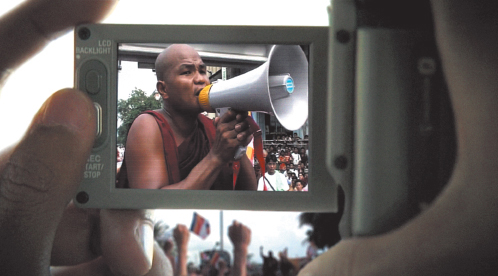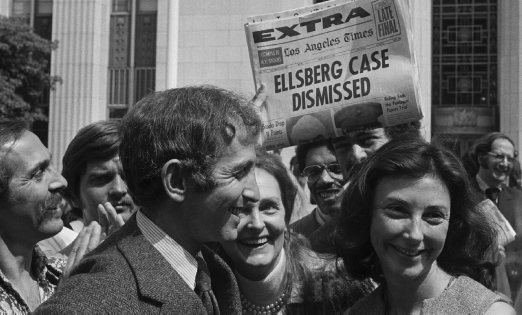Interpretations of Free Expression
Printed Page 419
Americans are not alone in debating what constitutes free expression and whether constraining expression is ever appropriate. Over time, four models have emerged that capture the widely differing interpretations of what “free expression” means.5 We can think of these as the authoritarian, state, social responsibility, and libertarian models. These models are distinguished by the degree of freedom their proponents advocate, and by ruling classes’ attitudes toward the freedoms granted to average citizens.
The Authoritarian Model
The authoritarian model developed around the time the printing press first arrived in sixteenth-century England. Under this model, criticism of government and public dissent were not tolerated, especially if such speech undermined “the common good”—an ideal that elites and rulers defined. The government actively censored any expression it found threatening, and it issued printing licenses only to those publishers willing to say positive things about the government. Today, this model persists in many developing countries that have authoritarian governments. In these nations, journalism’s job is to support government and business efforts to foster economic growth, minimize political dissent, and promote social stability.
The State Model
Under the state model, the government controls the press and what it reports. Leaders believe that the press should serve the goals of the state. Although the government tolerates some criticism, it suppresses ideas that challenge the basic premises of state authority. Today, a few countries use this model, including Myanmar (Burma), China, Cuba, and North Korea.

The Social Responsibility Model
The social responsibility model captures the ideals of mainstream journalism in the United States and most other democracies. The concepts and assumptions behind this model were outlined in 1947 by the Hutchins Commission, which was formed to examine the press’s increasing influence. The commission’s report first called for the development of press watchdog groups, on the assumption that the mass media had grown too powerful. Second, the report concluded, the press needed to take more responsibility for improving American society through actions like news forums for the exchange of ideas and better coverage of social groups and society’s range of economic classes.
The social responsibility model has roots in revolutionary Europe. This model calls for the press to be privately owned, so that newspapers operate independently of government. The press functions as a Fourth Estate—an unofficial branch of government that watches for abuses of power by the legislative, judicial, and executive branches. The press supplies information about such abuses to citizens so they can make informed decisions about political and social issues.

The Libertarian Model
The libertarian model is the flip side of both the state and authoritarian models and an extension of the social responsibility model. This model encourages vigorous criticism of government and supports the highest degree of individual and press freedoms. Proponents of the libertarian model argue that no restrictions should be placed on the mass media or on individual speech. In North America and Europe, many alternative newspapers and magazines operate on such a model. They often emphasize the importance of securing rights for sidelined populations (such as gay men and lesbians), and follow an ethic that absolute freedom of expression is the best way to fight injustice and arrive at the truth.